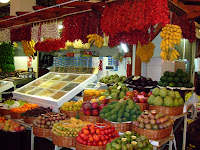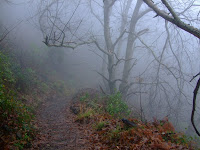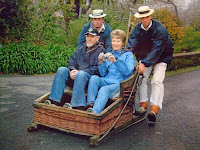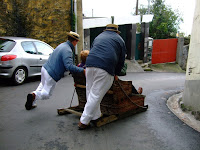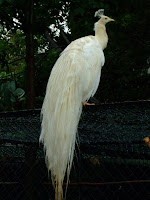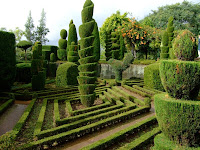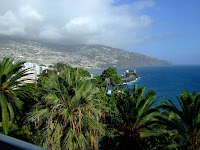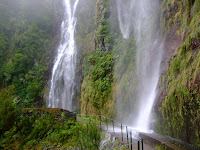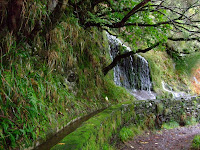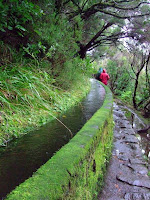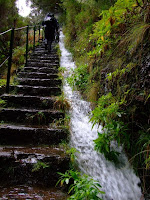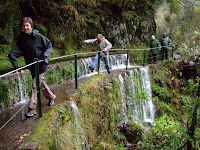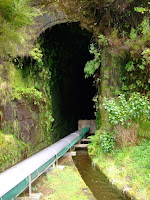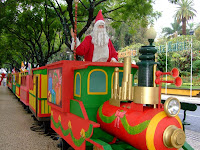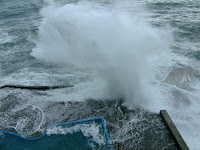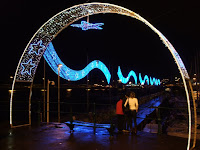

Nevertheless we set of for Quinta do Palheiro Ferreiro to visit the gardens as they are highly recommended in all the guidebooks. Frankly we were disappointed. At €10 each they were overpriced for the size and what was to be seen compared to gardens in England that charge £10. Admittedly it was winter when gardens are not at their best (but this could be allowed for in a winter admission price). The Blandy family now owns and runs the estate.


Leaving the gardens we followed the Levada dos Tornos back towards Funchal, leaving it only briefly to visit the Jasmine Tea House, a little piece of England transported to Madeira.
 Back on the levada we continued until we were above the Jardin Botanica where we left the levada and made our way back to the centre of town down some impossibly steep streets to finally see Funchal in the sunlight.
Back on the levada we continued until we were above the Jardin Botanica where we left the levada and made our way back to the centre of town down some impossibly steep streets to finally see Funchal in the sunlight. New Year's Eve is the big night in Funchal and our hotel roof terrace was ideally placed as a base to view the fireworks without having to tangle with the crowds that throng into Funchal for the big midnight display. That said, the crowds seemed to be much better behaved than New Year's Eve crowds we have experienced elsewhere.
New Year's Eve is the big night in Funchal and our hotel roof terrace was ideally placed as a base to view the fireworks without having to tangle with the crowds that throng into Funchal for the big midnight display. That said, the crowds seemed to be much better behaved than New Year's Eve crowds we have experienced elsewhere.

Our Madeiran adventure ended with a bang, but was it worth it? Not really. There are plenty of places in the world more deserving of a visit than this over-priced, over-crowded rock in the middle of the Atlantic. (Madeira has a higher population density than the UK.)

 Granted, we did not see it at its best, but for visitors from NZ there really is not enough that is so terribly different to make it worth the rather long detour that is required. That said, it was rather enouraging to visit a place where oxalis appears to be more of a nuisance weed than it was in our NZ gardens.
Granted, we did not see it at its best, but for visitors from NZ there really is not enough that is so terribly different to make it worth the rather long detour that is required. That said, it was rather enouraging to visit a place where oxalis appears to be more of a nuisance weed than it was in our NZ gardens.



